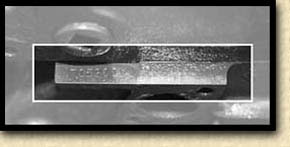Simply put, the proper
numbers can mean the difference between a solid investment and
losing your shirt! Actually, in the present-day restoration
marketplace a premium is placed on muscle cars equipped with their
original drivetrains. This doesn't mean a 396 Nova missing the
original engine is worthless - far from it - but all else being
equal the car with the original engine will be worth more. If you
plan on entering your car in concours classes at shows, the correct
components are necessary if you hope to place well.
Notice
there's a difference in the meaning of original and correct.
Original means the car has the engine or drivetrain parts installed
by the factory when the car was built. Correct means the various
components (i.e. engine code, head castings, etc.) are the proper
type for that particular model. It's not usually possible to
determine if the heads or intake installed on a particular engine
are the originals simply because they weren't serialized by
Chevrolet. However, the date codes of these parts should precede the
build date of the car by 1-3 months. This isn't an exact science,
however, and some exceptions do exist.
Since the cylinder
block is serialized it's possible to determine whether the engine
(or the block, anyway) was installed on the assembly line. The
engine code should match the codes used in a particular application,
and the sequence number should match the last six digits of the
car's V.I.N. Should is the key word in the above statement however,
since there are rare cases where an engine can be considered
original and not have a matching sequence number.
There have
been instances where engines were replaced under warranty, and
although the technicians were instructed to stamp the sequence
number into the replacement block, this did not always happen. |
Engines with complete assembly plant and ID codes, but no
sequence numbers, are the result. If the engine in your car has a
sequence number that doesn't match the last six digits of the
V.I.N., it is almost certainly not original. These cars were mass
produced, however, and mistakes did happen on rare
occasions.

This big block does have the engine V.I.N. code
stamped to the right of the engine ID number. This code was added at
the final vehicle assembly plant.
Since the engine
codes were stamped on a pad that is an extension of the deck
surface, it is possible to remove the codes and identification
numbers. This may happen during a normal rebuilding procedure (if a
block is decked), or it can be purposely done by unscrupulous
persons trying to pass off an unoriginal or incorrect block/engine
to an unsuspecting buyer. That's why it's extremely important that
all the pieces of the identification puzzle match. The engine codes
and sequence numbers should match, the various casting numbers
should be correct and the component date codes must precede the
build date of the car (but not by more than a few months). If all
these match, it's a pretty safe bet the engine is original. If any
one of these is incorrect, the authenticity of the car can be
seriously challenged. |
